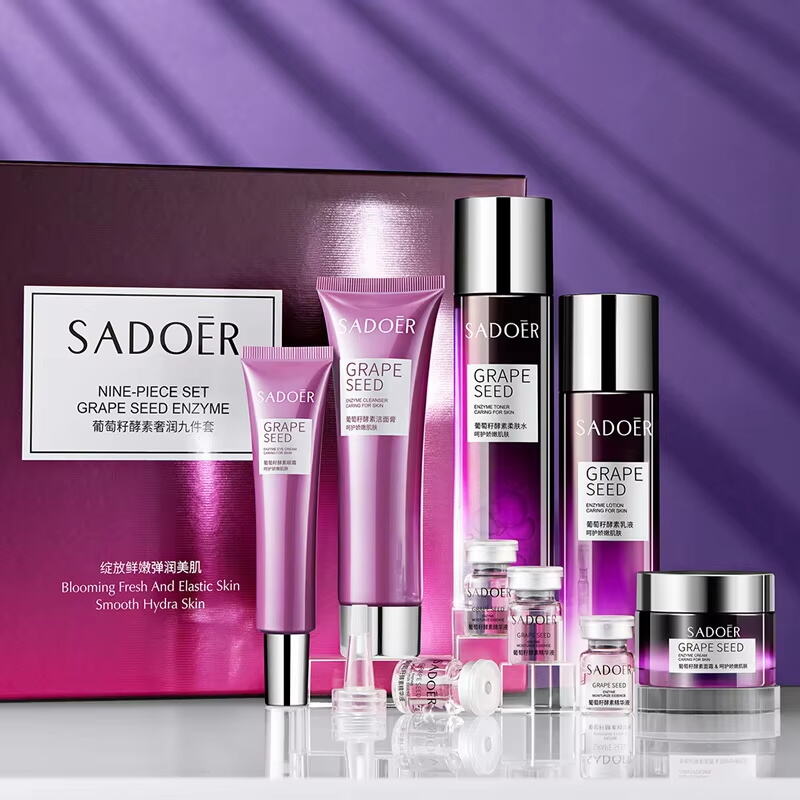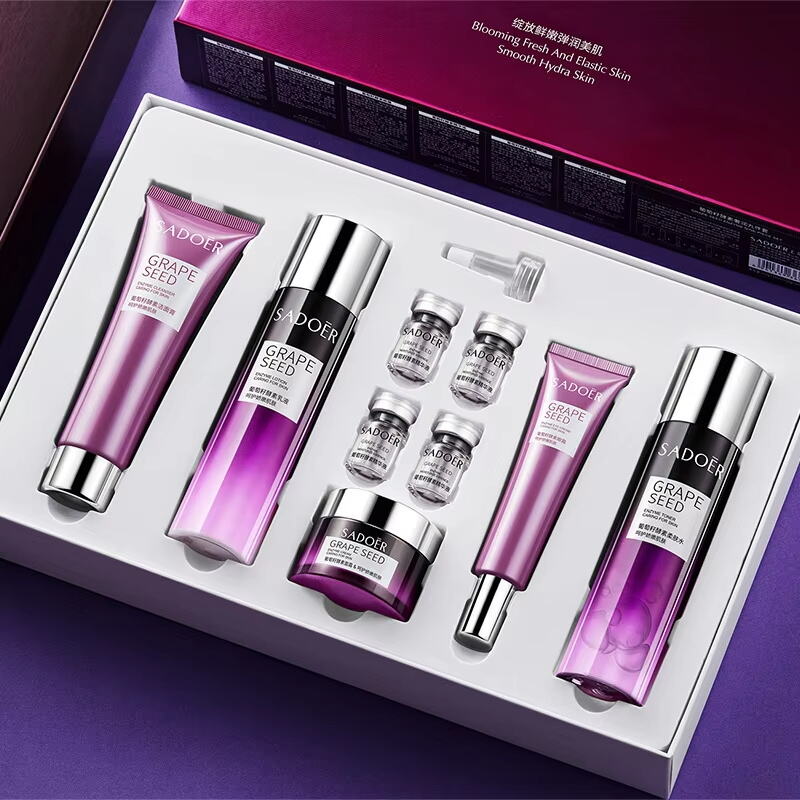The Essential Role of Face Cream in Maintaining Healthy Skin
A well-formulated Face Cream does much more than hydrate; it plays a vital role in protecting and repairing the skin’s natural barrier. Our skin barrier is the frontline defense against environmental stressors, pollutants, and moisture loss. Using the right Face Cream can support this barrier, preventing damage and maintaining overall skin health. How does a Face Cream actually work to protect the skin barrier, and why is it so critical for everyday skin care? Understanding this can transform the way you think about your daily routine and the importance of consistent Face Cream application.
The skin barrier’s function and why it matters
The skin barrier, often called the stratum corneum, consists of tightly packed cells and lipids that create a protective shield. This barrier regulates water loss and shields against irritants and pathogens. When the barrier is compromised, the skin becomes dry, sensitive, prone to inflammation, and premature aging. A Face Cream designed to protect the skin barrier aims to restore and reinforce this shield, keeping the skin resilient and balanced.
What happens when the skin barrier is damaged
When the skin barrier is weakened, you might notice increased sensitivity, redness, or flakiness. Environmental factors like harsh weather, pollution, and UV exposure accelerate barrier degradation. Overuse of harsh cleansers or exfoliants can strip away essential lipids. A compromised barrier allows moisture to evaporate quickly, leading to dehydration and a dull complexion. This cycle can be halted with the right Face Cream that nourishes and restores the barrier’s natural lipids and hydration.
How Face Creams Restore and Strengthen the Skin Barrier
Replenishing essential lipids
Many Face Creams include ceramides, fatty acids, and cholesterol — the key lipids that make up the skin barrier. These ingredients help replenish what the skin loses daily due to environmental damage or cleansing. Ceramides, in particular, play a crucial role in holding skin cells together, forming a “mortar” that seals moisture in and blocks irritants out. By providing these lipids, a Face Cream supports the natural repair processes and fortifies the skin barrier against further harm.
Supporting hydration retention
Hydration is vital for skin barrier integrity. Face Creams often contain humectants like glycerin and hyaluronic acid, which attract and hold water within the skin layers. Without adequate moisture, the barrier becomes brittle and vulnerable. A well-formulated Face Cream maintains hydration levels by balancing moisture attraction and retention, which softens the skin and improves its resilience.
How Ingredients in Face Creams Protect the Skin Barrier
Antioxidants shield against oxidative stress
Oxidative stress from free radicals accelerates skin barrier breakdown. Many Face Creams incorporate antioxidants such as vitamin E, vitamin C, green tea extract, and niacinamide to neutralize these damaging molecules. By reducing oxidative damage, these antioxidants support the barrier’s integrity and slow down signs of aging caused by environmental exposure.
Anti-inflammatory agents calm and soothe
A stressed skin barrier often reacts with redness, irritation, or itchiness. Face Creams that contain anti-inflammatory ingredients like aloe vera, chamomile, or centella asiatica can soothe and calm the skin. These ingredients reduce inflammation and support healing, which contributes to faster barrier recovery and less discomfort.

The Role of Face Cream Texture and Formulation in Barrier Protection
Choosing the right texture for effective protection
The texture of a Face Cream affects how well it can protect and reinforce the skin barrier. Rich creams with occlusive agents like petrolatum, shea butter, or squalane create a physical barrier on the skin’s surface that locks in moisture and prevents irritants from penetrating. Lighter formulations may be suitable for oily skin but might require layering with additional protective products during harsh weather.
Importance of non-irritating, barrier-friendly formulations
Face Creams designed for barrier protection avoid harsh fragrances, alcohols, or irritants that can further weaken the skin. Hypoallergenic and dermatologist-tested formulations help maintain barrier integrity without triggering sensitivity. Choosing Face Creams with gentle, nourishing ingredients ensures the skin is shielded while being cared for gently.
Daily Habits That Enhance the Protective Effects of Face Cream
Consistent application supports barrier repair
Using a Face Cream regularly reinforces the skin barrier continuously. Skipping applications, especially in dry or cold weather, can lead to gaps in protection, allowing moisture loss and irritation. Morning and night application of a suitable Face Cream helps maintain steady hydration and barrier repair, promoting healthier skin over time.
Combining Face Cream with complementary skincare steps
While Face Cream is the final step in most routines, its protective role is enhanced by prior steps such as gentle cleansing and applying serums with active ingredients. Proper layering ensures that the skin is prepped and the Face Cream can lock in the benefits. Using sunscreen over your Face Cream during the day further protects the skin barrier from UV-induced damage.
Environmental Factors and Their Impact on Skin Barrier and Face Cream Effectiveness
How climate influences skin barrier needs
Dry, cold, or windy climates strip moisture from the skin and accelerate barrier damage. In these conditions, a more occlusive Face Cream can create a protective shield. Conversely, humid environments might call for lighter Face Creams to avoid clogging pores while still supporting barrier health.
Pollution and UV exposure challenges
Airborne pollutants and UV rays cause oxidative stress and inflammation, weakening the skin barrier. A Face Cream rich in antioxidants and broad-spectrum sunscreen helps neutralize free radicals and protect the barrier. Including a protective Face Cream in your routine is essential for urban environments with high pollution levels.
Common Misconceptions About Face Cream and Skin Barrier Protection
Face Cream is only for dry skin
While dry skin clearly benefits from Face Cream, all skin types need barrier protection. Oily and combination skin can also experience barrier damage from over-cleansing or harsh products. Face Creams formulated for different skin types ensure barrier support without clogging or excess oiliness.
Natural oils alone can replace Face Cream
Many believe that natural oils suffice for barrier protection, but while oils like jojoba or argan have beneficial properties, they cannot replace a balanced Face Cream that includes essential lipids, humectants, and occlusives in correct ratios. Face Creams offer a scientifically designed blend that provides comprehensive barrier support.
How to Select the Best Face Cream for Barrier Protection
Look for key protective ingredients
Choose a Face Cream with ceramides, cholesterol, fatty acids, and humectants like hyaluronic acid. These ingredients mimic the skin’s natural composition and help rebuild and maintain the barrier. Avoid products with potential irritants like synthetic fragrances or alcohols that disrupt the barrier.
Consider your skin type and environment
Tailoring the Face Cream choice to your skin type and living environment enhances protection. For sensitive skin, select hypoallergenic and fragrance-free options. For dry climates, richer formulations are beneficial. Those living in polluted cities should prioritize antioxidant-enriched Face Creams.
Enhancing Face Cream Effectiveness Through Application Techniques
Applying on clean, slightly damp skin
To maximize absorption and barrier protection, apply Face Cream to freshly cleansed skin that is still slightly damp. This traps moisture and helps the Face Cream penetrate more deeply, supporting barrier repair from within.
Gentle, upward strokes and tapping
Using light upward strokes spreads the Face Cream evenly without disrupting the skin barrier. Tapping motions with fingertips stimulate circulation and enhance product absorption. Avoid rubbing or tugging the skin, which can weaken the barrier.
Signs That Your Skin Barrier Needs More Support
Increased sensitivity and redness
If your skin feels tight, itchy, or red frequently, the barrier may be compromised. These signs indicate that your Face Cream needs to be richer or more targeted in barrier-supporting ingredients.
Persistent dryness and flakiness
When skin flakes or peels, it signals moisture loss and barrier dysfunction. A Face Cream with enhanced hydration and occlusive agents can restore balance and soothe the skin.
Long-Term Benefits of Using a Barrier-Protective Face Cream
Prevention of premature aging
Maintaining a healthy skin barrier slows down wrinkle formation and loss of elasticity. A consistent Face Cream regimen that supports the barrier protects collagen and elastin from damage caused by dryness and environmental stress.
Improved overall skin health and appearance
Barrier protection leads to smoother, plumper skin with a radiant complexion. Face Creams that strengthen the skin barrier also reduce breakouts, sensitivity, and redness, contributing to a balanced and resilient skin condition.
FAQ
Can a Face Cream repair a severely damaged skin barrier?
Yes, a Face Cream with ceramides, humectants, and occlusives can help repair a compromised barrier over time. Consistent use and gentle skincare practices accelerate recovery, but severe damage may require professional advice.
How often should I apply Face Cream for barrier protection?
Apply your Face Cream twice daily—morning and night—for optimal barrier support. In harsh climates or when skin feels dry, you may need an additional layer during the day.
Can I use Face Cream with active ingredients like retinol or acids?
Yes, but choose Face Creams that soothe and protect the barrier. Applying the Face Cream after active treatments helps reduce irritation and maintain hydration.
Is it necessary to switch Face Creams seasonally for barrier protection?
Adjusting your Face Cream according to season helps address changing barrier needs. Richer creams in winter and lighter ones in summer can optimize protection without overwhelming the skin.
Table of Contents
- The Essential Role of Face Cream in Maintaining Healthy Skin
- How Face Creams Restore and Strengthen the Skin Barrier
- How Ingredients in Face Creams Protect the Skin Barrier
- The Role of Face Cream Texture and Formulation in Barrier Protection
- Daily Habits That Enhance the Protective Effects of Face Cream
- Environmental Factors and Their Impact on Skin Barrier and Face Cream Effectiveness
- Common Misconceptions About Face Cream and Skin Barrier Protection
- How to Select the Best Face Cream for Barrier Protection
- Enhancing Face Cream Effectiveness Through Application Techniques
- Signs That Your Skin Barrier Needs More Support
- Long-Term Benefits of Using a Barrier-Protective Face Cream
- FAQ

